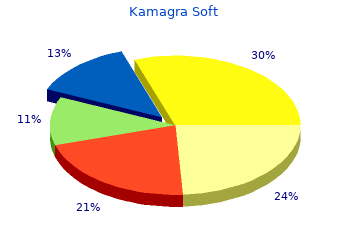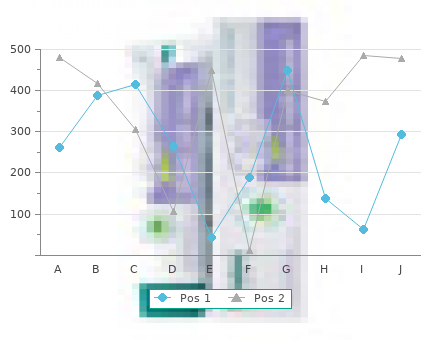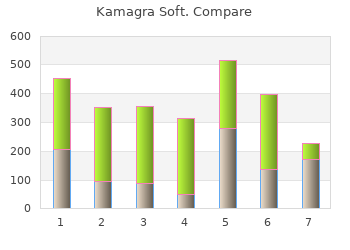Kamagra Soft
2018, State University of New York Institute of Technology at Canton, Denpok's review: "Kamagra Soft 100 mg. Only $3,4 per pill. Trusted online Kamagra Soft no RX.".
The dose equivalent to organs or tissues of reference (T) that will be received from an intake of radioactive mate- rial by an individual during the 50-year period following intake kamagra soft 100 mg cheap. In this process, a g -ray transfers only a partial amount of energy to an outer orbital electron of an absorber, and the photon itself is deflected with less energy. The probability of occurrence of a nuclear reaction or the formation of a radionuclide in a nuclear reaction. The period of time that a counter remains insensitive to count the next after an event. Dose equivalent at a tissue depth of 1cm (1000mg/cm2) resulting from external whole-body exposure. An instrument to measure the cumulative dose of radiation received during a period of radiation exposure. Time required for an initial administered dose to be reduced to one half as a result of both physical decay and biological elim- ination of a radionuclide. Terms Used in Text is the effective half-life, and Tp and Tb are the physical and biological half- lives, respectively. A mode of decay of a proton-rich radionuclide in which an orbital electron is captured by the nucleus, accompanied by emission of a neutrino and characteristic x-rays or Auger electrons. The kinetic energy gained by an electron when acceler- ated through a potential difference of 1V. Capability of a detecting system to separate two g -ray peaks of different energies. A nuclear process by which a nucleus divides into two nearly equal smaller nuclei, along with the emission of two to three neutrons. A device in which a short-lived daughter is sepa- rated chemically and periodically from a long-lived parent adsorbed on adsorbent material. A unique characteristic of a radionuclide, defined by the time during which an initial activity of a radionuclide is reduced to one half. The thickness of an absorbing material required to reduce the intensity or exposure of a radiation beam to one half of the initial value when placed in the path of the beam. An alternative mode to g -ray decay in which nuclear excitation energy is transferred to an orbital electron, which is then ejected from the orbit. The number of radiations detected divided by the number of radiations striking the detector. An atom or group of atoms with a positive charge (cation) or a nega- tive charge (anion). Nuclides having the same mass number, that is, the same total number of neutrons and protons. Decay of the excited state of an isomer of a nuclide to a lower excited state or the ground state. Nuclides having the same atomic and mass numbers but differing in energy and spin of the nuclei. Nuclides having the same atomic number, that is, the same number of protons in the nucleus. A quantity of a substance that, when administered or applied to a group of any living species, kills 50% of the group in 60 days. Energy deposited by radiation per unit length of the matter through which the radiation passes. The difference between the mass of the nucleus and the com- bined masses of individual nucleons of the nucleus of a nuclide. An excited state of a nuclide that decays to a lower excited or the ground state by isomeric transition with a measurable half-life. A particle of no charge and mass emitted with variable energy during b+, and electron capture decays of radionuclides. A term used to characterize the state of a radio- active material to which no stable isotope of the compound has been added purposely. The organ that is functionally essential for the body and receives the highest radiation dose after administration of radioactivity. The organ intended to be imaged and expected to receive the greatest concentration of administered radioactivity. A process in which a g -ray, while passing through an absorber, transfers all its energy to an orbital electron, primarily the K-shell electron of an absorber, and the photoelectron is ejected from the shell. A term used to indicate the reproducibility of the measurement of a quantity when measurements are made repeatedly. A factor dependent on linear energy transfer that is multiplied by absorbed doses to calculate the dose equivalents in rem. It is used in radiation protection to take into account the relative radiation damage caused by different radiations. One rad is equal to 100ergs of −2 radiation energy deposited per gram of any matter, or 10 J/kg of any matter.


Ideally this can be achieved by acquiring at least 30 million counts for 64 × 64 images or 120 million counts for 128 × 128 images discount kamagra soft 100mg free shipping. For Siemens e-Cam cameras, acquisition of 5 million counts in a 1024 × 1024 matrix is recommended. In determining spatial resolution by the intrinsic method, the two detectors must be kept apart at maximum radius, and a 99mTc point source is placed in a source holder on the rear bed mechanism provided by the manufacturer. The bar phantom is placed on the detector, and the bed is raised to a maximum height. Nowadays, many manufacturers provide a phantom using 5-point sources for low-energy high-resolution collimators or 3-point sources for medium- and high-energy collimators. In the case of 90° configurations, the default radius is applied as given by the manufacturer. This method is also used to check the head alignment and noncircular orbit configuration in multihead camera systems with the computer software. The next daily test is the quality control test that is performed by using a quality phantom provided by the manufacturer. With a multihead camera, does the sensitivity of an imaging device increase or decrease? Which of the following acquisition matrices would give better spatial resolution: a 64 × 64 matrix or a 128 × 128 matrix? In the filtered backprojection method, the Fourier method is preferred to the convolution method. A filter with a low cut-off frequency should be used for noisy data and low count density studies in order not to curtail image detail. Single-photon emission computed tomography in the year 2001: Instrumentation and quality control. Positrons are annihilated in body tissue and produce two 511-keV annihi- lation photons that are emitted in opposite directions (180°). Two photons are detected in an electronic time interval, called “coincidence time window,” by two detectors connected in coincidence. Detectors are arranged in the array of several rings to have the organ of interest in the field of view. Data collected over 360° simultaneously around the body axis of the patient are used to recon- struct the image of the activity distribution in the slice of interest. Because the two opposite photons are detected in a straight line, no collimator is needed to limit the field of view, and the technique is called the electronic collimation. Of these, 82Rb-RbCl is 18 commonly used for myocardial perfusion imaging and F-fluorodeoxyglu- cose for metabolic imaging of the heart, brain, and various types of can- cers. The number of rings in current scanners (18–32), and the number of detectors per ring vary with the manufacturer. The number of rings and, hence, the width of the array of rings define the axial field of view. Typically, each block is about 3-cm deep and grooved into 6 × 8, 7 × 8, or 8 × 8 elements by partial cuts through the crystal with a saw. The cuts are made at varying depths, with the deepest cut at the edge of the block. The cuts are filled with opaque reflective mate- rials to prevent spillover of light between elements. The block detectors are arranged in an array of full or partial rings with a diameter of 80 to 90cm. Different arrangements of block detectors adopted by manufacturers are shown in Figure 13. In the case of partial ring configurations, the blocks have to be rotated around the patient to obtain 360° acquisition of data. This uncertainty in detection time is called the timing resolution or coincidence timing window. The timing resolution results from the difference in pulse formation in the detector primarily due to statisti- cal variations in gain and scintillation decay time of the detector. Further- more, there is a time delay in the arrival of one photon relative to the other, because of the difference in distances traveled by the two photons, partic- 186 13. Because the velocity of light is 3 × 10 m/s, the difference between the arrival times of the two photons is about 3 to 4ns (time to travel 1m). After annihilation, two timing signals A and B are formed with timing width, say t, depending on the scanner system. Both A and B indicate that the timing window of the coincidence circuit must be at least 2t to detect all events in coincidence.

Initially 100 mg kamagra soft overnight delivery, atropine at doses of 2 to 6 mg should be given intravenously or intramuscularly to reverse the effects of organophosphates at muscarinic receptors; it has no effect on nicotinic receptors. Thus, atropine rapidly treats life-threatening respi- ratory depression but does not affect neuromuscular or sympathetic effects. This should be followed by the administration of an oxime, which is a nucleophile compound that reactivates the cholinesterase whose active site has been bound to a nerve agent. De- pending on the nerve agent used, oxime may not be helpful because it is unable to bind I. Finally, the only anticonvulsant class of drugs that is effective in seizures caused by organophosphate poisoning is benzodiazepines. The dose required is frequently higher than that used for epileptic seizures, requiring the equivalent of 40 mg of diaz- epam given in frequent doses. All other classes of anticonvulsant medications, including phenytoin, barbiturates, carbamazepine, and valproic acid, will not improve seizures re- lated to organophosphate poisoning. The onset of symptoms after cyanide exposure is rapid and usually begins with eye irritation. The antidote for cyanide poisoning is a combination of sodium nitrite and sodium thiosulfate. It remains a significant terrorist threat today because of simplicity of manufacture and effectiveness. The effects of sulfur mustard are delayed 2 h to2 days, depending on the severity of exposure. Large portions of body-surface area may be affected, similar to the situation in burn victims. Clinically, this causes pseudomembrane formation and, in the most severe cases, airway obstruction. The effects on the eyes include conjunctivitis, blepharospasm, pain, and corneal damage. Death results from airway obstruction, pneumonia, secondary skin infections, or sepsis with neutropenia. Silver sulfadiazine or other topical antibiotics should be used to prevent secondary skin infections. Conjunctival irritation should be treated with topical solutions, including antibiotics. Petroleum jelly should be applied to the eyelids to prevent them from sticking together. The headache and thrombocytopenia after a recent camping trip in a rickettsial en- demic region are typical findings. As this is usually a serologic diagnosis requiring signif- icant laboratory processing time, and can be fatal, empirical therapy with doxycycline is warranted. The lack of a rash does not preclude this diagnosis because the characteristic macular rash spreading from the wrists and ankles centripetally appears 2–5 days after the first fever. Atovaquone is used for babesiosis, a disease that is defined by hemolysis and is not prevalent in the Ozarks. The patient has no evidence of bacterial meningitis to warrant empirical coverage. While fever and myalgias are typical of influenza, it is most common in winter and does not typically cause thrombocytopenia. The characteristic diffuse rash, as well as the lack of a primary infected site, make staphylococcus the more likely inciting agent. Staphylococcal toxic shock can be associated with immunosuppression, surgical wounds, or retained tampons. Mere Staphylococcus aureus colonization (with an appropriate toxigenic strain) can incite toxic shock. Centers for Disease Control and Prevention guidelines state that measles, Rocky Mountain spotted fever, and leptospirosis need to be ruled out serologi- cally to confirm the diagnosis. However, this patient is at very low risk for these diagnoses based on vaccination and travel history. Six types of agents have been designated as category A: Bacillus anthracis, botulinum toxin, Yersinia pestis, smallpox, tularemia, and the many viruses that cause vi- ral hemorrhagic fever. Those viruses include Lassa virus, Rift Valley fever virus, Ebola vi- rus, and yellow fever virus. Presentation is rapid with the classic skin findings described in this case, which approximate purpura fulminans as the illness progresses. Fever occurs when a pyrogen such as a microbial toxin, microbe particle, or cytokine resets the hypothalamus to a higher temperature. Rigidity and autonomic dysregula- tion are characteristic of malignant hyperthermia, a subset of hyperthermia. Malignant hyperthermia oc- curs in individuals with a genetic predisposition that causes elevated skeletal muscle intracellular calcium concentration after exposure to some inhaled anesthetics or succi- nylcholine. Although malignant hyperthermia is rare, these drugs are used commonly, and without prompt recognition the condition may be fatal.
8 of 10 - Review by Z. Jaffar
Votes: 256 votes
Total customer reviews: 256

